Here in Hungry Geeks, we’ve been experiencing the generation of ZenBooks from the first generation to the latest one, that’s 8 years of innovation for the starter of “Ultrabooks” of Windows laptops since Computex 2011. We’ve seen the innovation from bringing luxury design, high-quality materials, and even packing top-notch performance on a thin an elegant body.
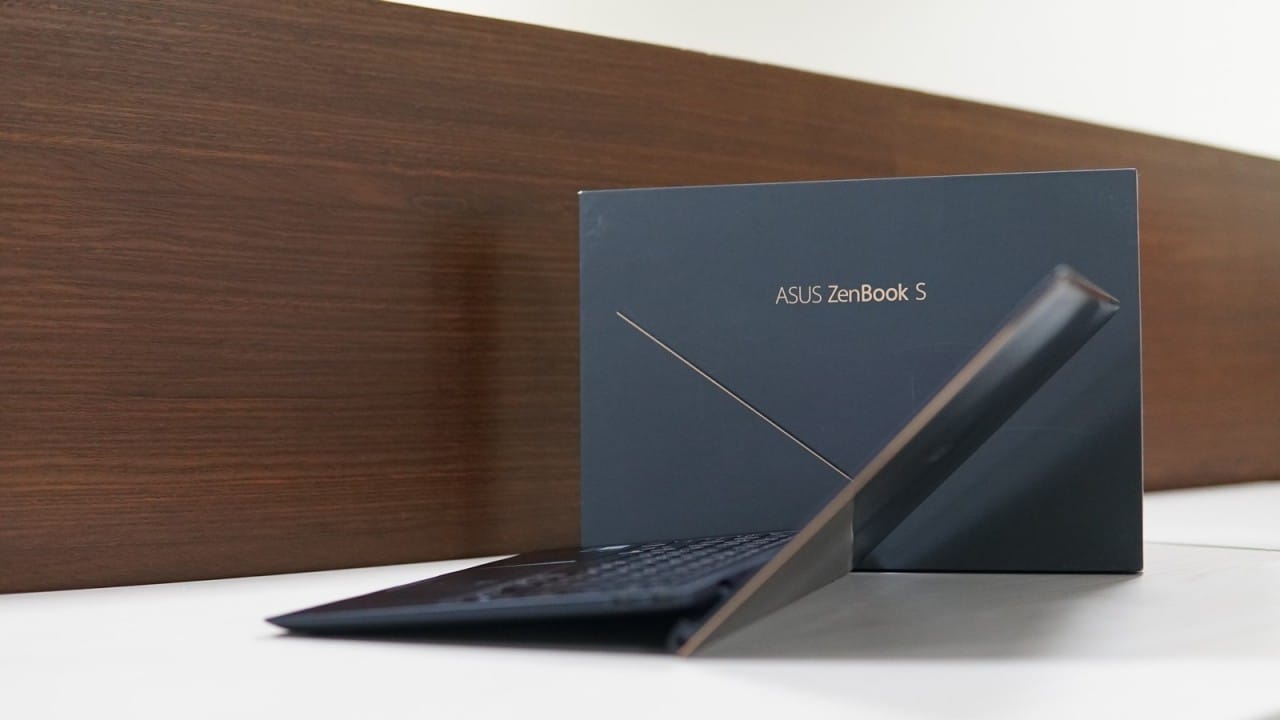
Adding up to the powerhouse is the ZenBook S, a laptop meant to be an executives dream machine with its top-notch performance with stunning looks. This is just one of the many ZenBook lineups that were launched last quarter and its named “S” for its thinnest profile and even 4K touchscreen.
So how did the ZenBook S faired our experience? Here’s our full review.
ZenBook S UX391 Specifications
The ZenBook S reminded us of our experience of the ZenBook Flip S and the ZenBook 3 Deluxe (Glad we still remembered their names). Among the ZenBook lineup today, the S carries the flag for being portable at being just .51 inch thick and 1.05kg light.

One detail you will notice on the ZenBook S is the ErgoLift hinge, it raises up when opened due to the lower lip of the hinge is now activated as a part of the bottom. This gives the advantage of bringing a raised keyboard, more space for fans to work and stylish of course.
Now, this approach isn’t new as ASUS also implemented this with their VivoBook notebooks this year, seems the company is implementing a lot of drastic improvements in their laptops as a leader in this category in South East Asia.
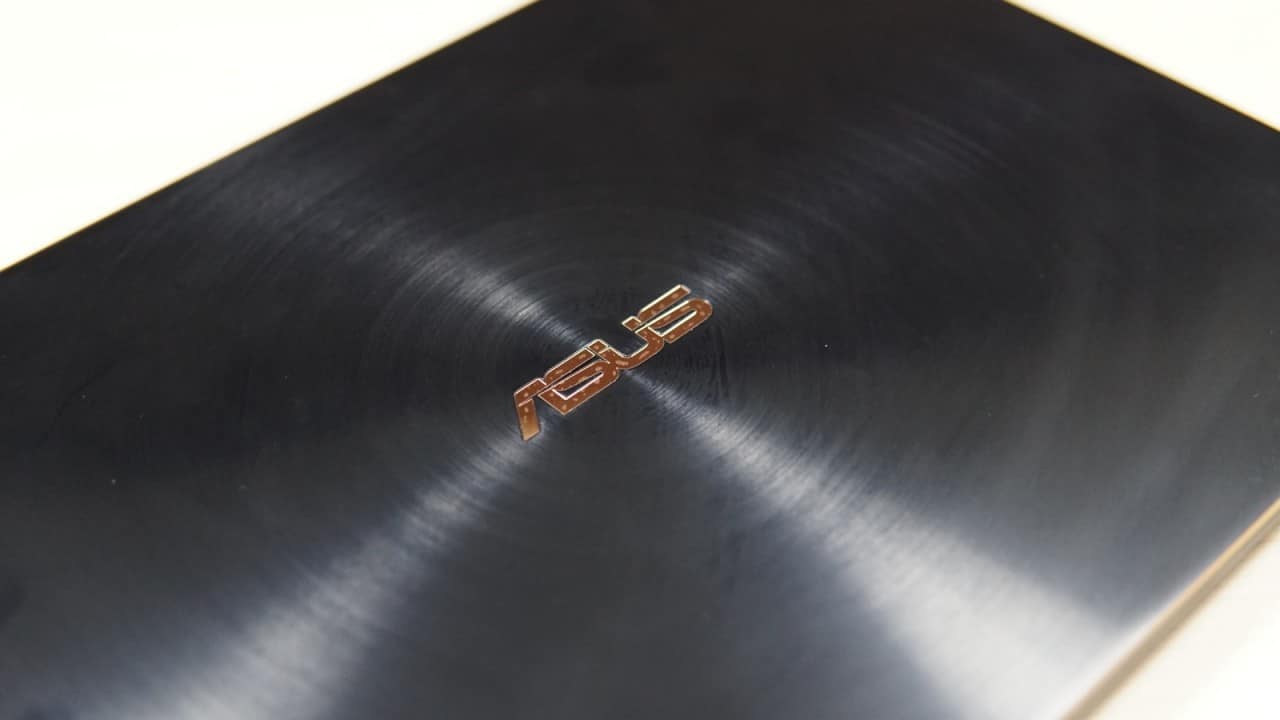
The traditional concentric circular finish with gold edge accents is also found, we find this finish now boring thanks to its 8 years of iteration, but its seems for ASUS this is still timeless.
Our point of an argument is that the ZenBook S might be a stunner, but it has no distinct difference anymore in looks from its previous generation. Just like a new laptop, you want it to stand out in looks, but we guess ASUS is trying the same approach as the MacBook Pro with the same looks for more than 3 years now.
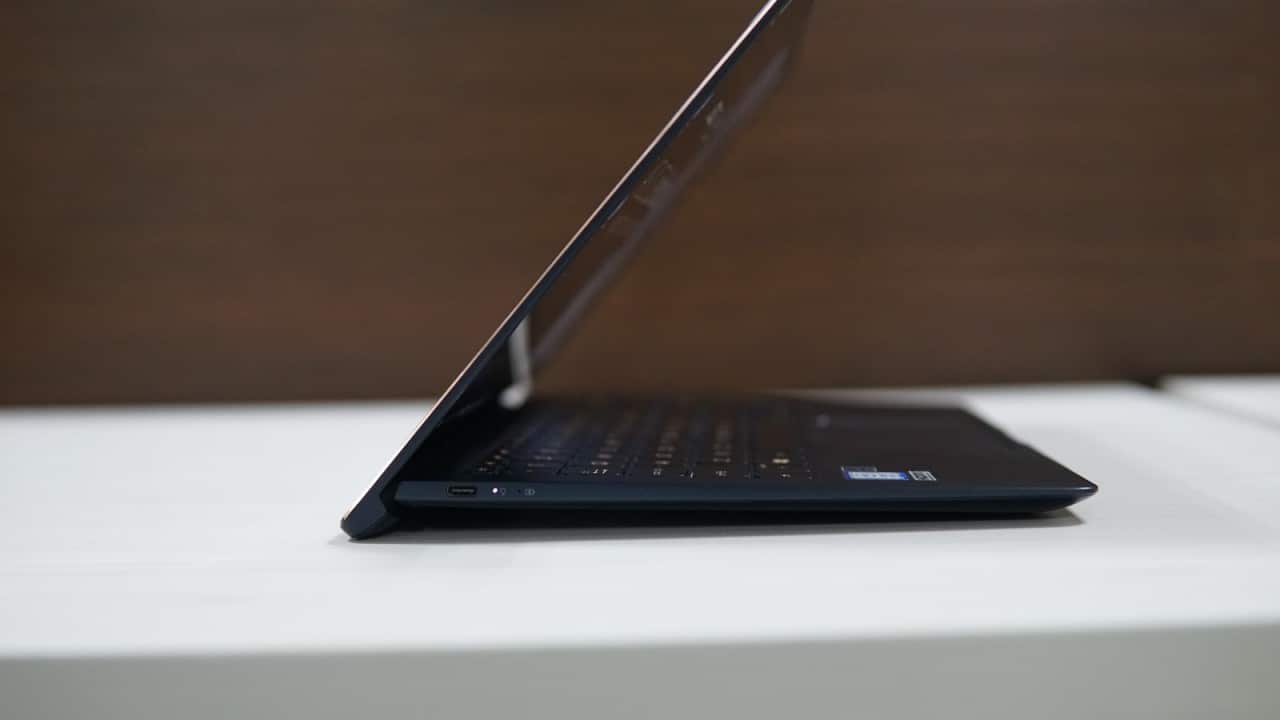
On the side (left) is the USB 3.1 Type-C port along with the LED notification for charging and processing, while on the right are two USB 3.0 Thunderbolt ports and the headphone jack located at the ergolift hinge.
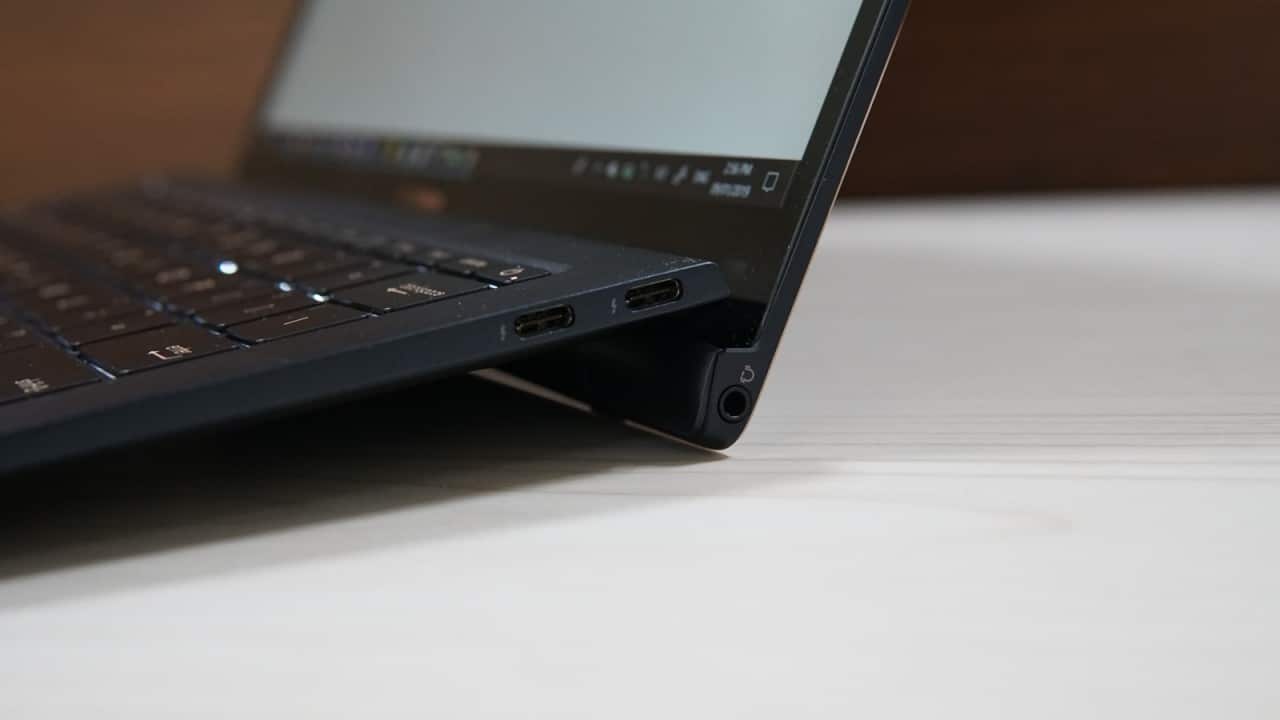
Bezels are distinguishably smaller as compared to the Zenbook Pro 13 / 15 series but not enough, as compared to the smaller form factor ZenBook 13,14,15 that were released recently.
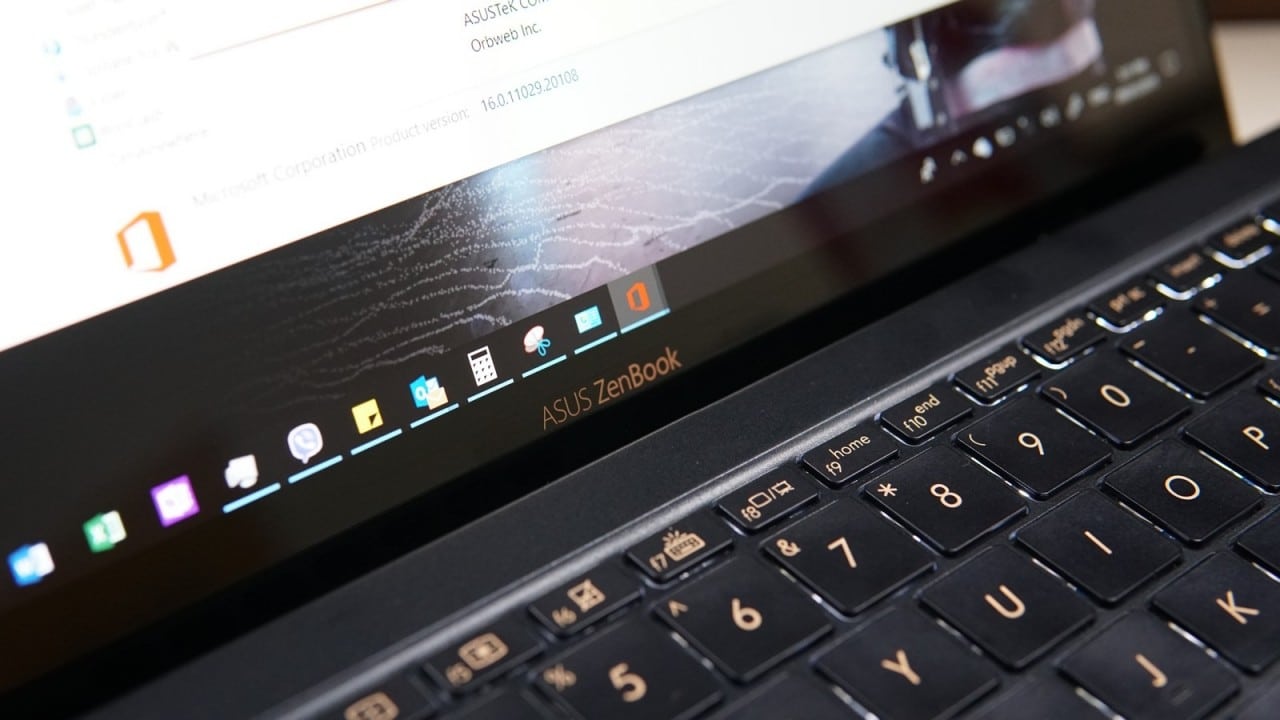
The ZenBook S has a delightful keyboard, it’s nice and tactile similar to the experience of a MacBook Pro. It’s responsive, illuminated beautifully and just have the right flex when pressed hard on. Though we have to give warning that the ergolift layout might not be for everyone as space below makes it flex, so if you’re a heavy typer it will be some point of annoyance.

Though our gripe now is that ASUS removed the secondary function keys in the arrow which are mainly for the home and end, pressing it on top of the rows when selecting a row of text is now more troublesome
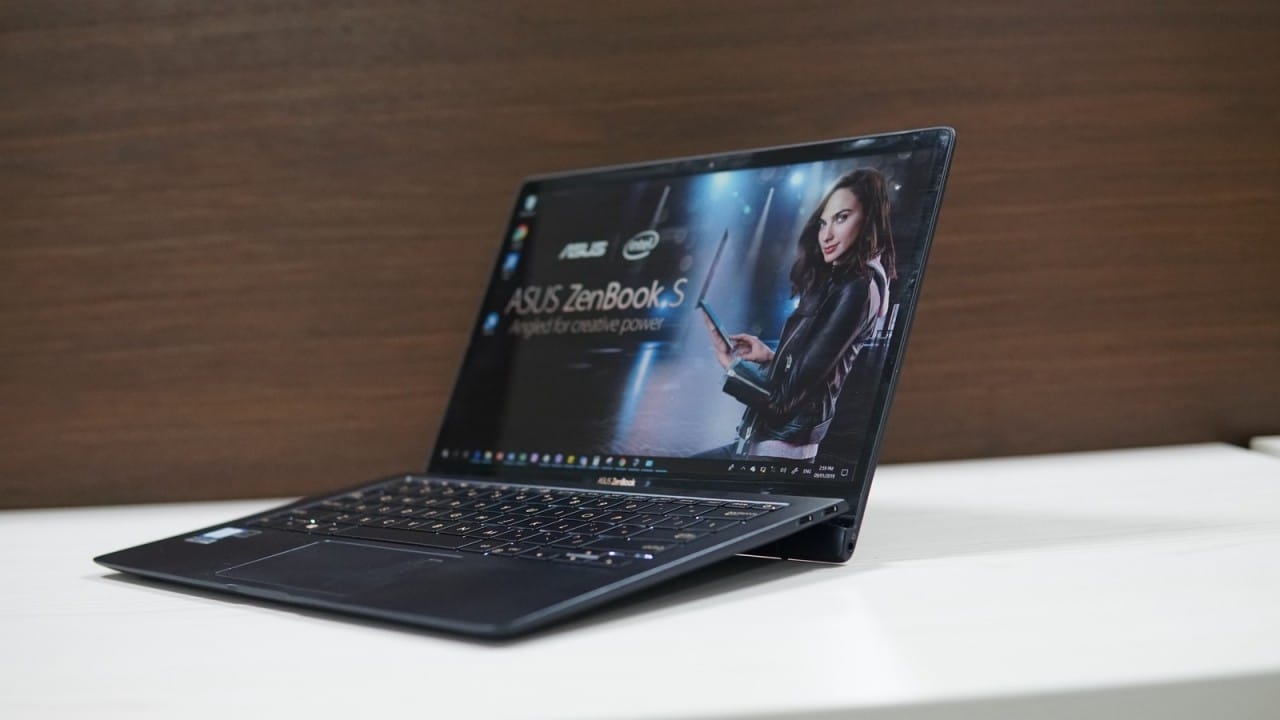
The 13.3″ 4K IPS display with touchscreen is punchy in colors and delivers above average quality visuals. What’s nice in the ergo lift hinge is that the bottom chin is thinner and makes it smaller overall when raised. It’s light enough to be carried and quick touches in the screen is possible even when lifting the laptop with one hand.
Colors are pretty accurate in representation with SRGB calibration, we’re glad that our works in social media represents the colors we really need to see. A much needed feature for marketing professionals.

As compared to laptops in its price point, the ZenBook S is definitely clear in audio quality, but still needs some punch as compared to its bigger ZenBook brothers. As compared to the MacBook Air, the Mac still wins in overall volume and bass effect but ASUS takes the clarity division in our comparison.
While the ZenBook S might be thin, don’t underestimate its internals with better delivery of hardware as the Audio division of ASUS improved significantly over the years. Personally, you don’t need to worry about the speakers.
Our unit carries an Intel Core i7-8550U processor with 16GB of RAM included, quite generous already from the dual-core U processors as compared to before. But it seems that ASUS keeps on pushing their machines to the limit, in this case, is the 4K screen that inhibits the graphics and CPU to its potential. Paired with Google Chrome, you’re practically limited to basic browsing, office, Spotify and casual programs with the ZenBook S.
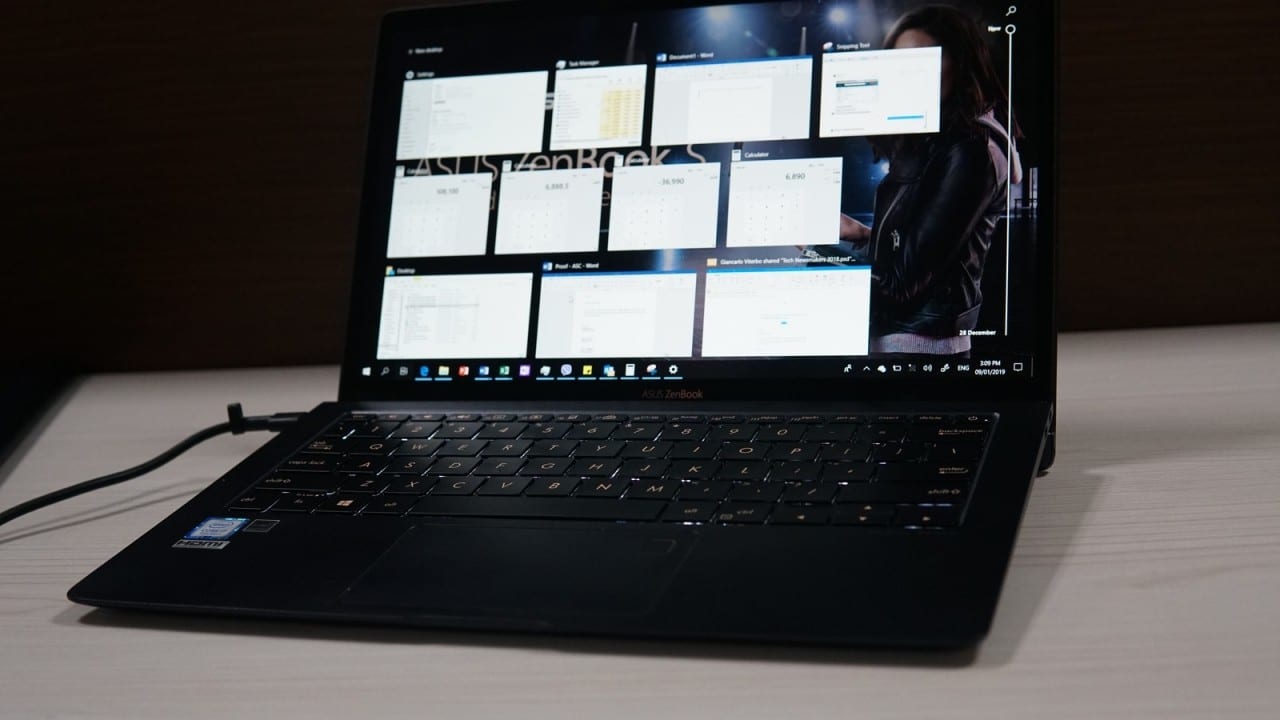
We don’t mean to be rude, but just forget the 4K resolution screen and downscale it to 1080p if you want some fast and uninterrupted computing with the ZenBook S. While the screen is amazing at 4K quality, there aren’t a lot of apps in our usage scenario to maximize it aside from watching videos.
We didn’t bother doing benchmarks in this machine as it simply can do the basics, what’s important is that can this handle simultaneous workloads of Office, Emails, Multiple Tabs, Chat Apps and even browsing/editing photos with Photoshop on the side. Which is my job as a marketing lead, in my scenario this is enough as long as the screen is at 1080p.

We love how the Zenbook S is so light, you can jump out your seat and check out your team without the need to close apps or even wait for jitters.
When it comes to thermal management, the ZenBook S isn’t exempted as it has a good fan inside with ample cooling as long as you’re in a well ventilated (in our case aircon) environment.

In our case the palm area doesn’t heat up, it’s more of the bottom chassis and sides that tend to get above warm temperatures when crunching multiple apps. Nothing alarming, but the fan tends to push its limit but not in annoying noises.
As our title suggests, portability is your main priority in purchasing the ZenBook S in our opinion. Weighing at only 1.05kg, the ZenBook S is even lighter than the smaller ZenBook 3 Deluxe at 1.3kg or even the MacBook Air.
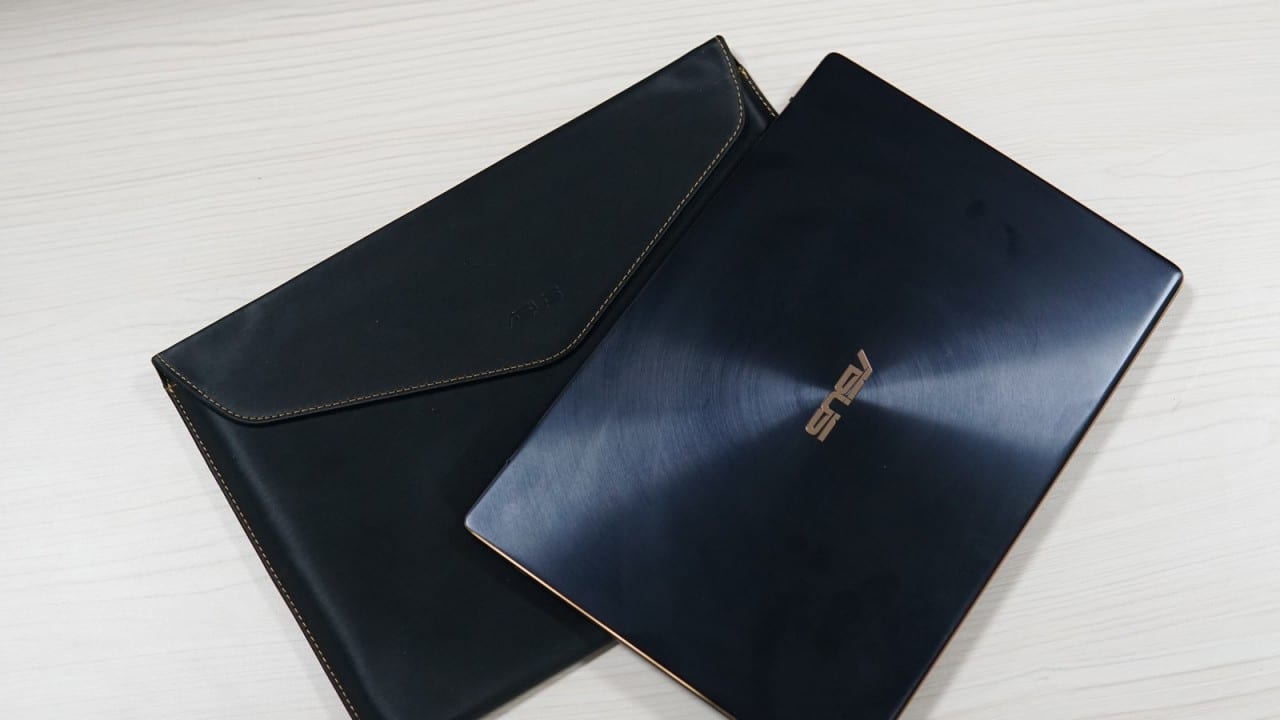
We love the carrying case that comes with the ZenBook S, it’s a nylon texture with gold-like stitches to show the elegance of an envelope sleeve. In our experience, this is already one of the lightest notebooks we’ve carried and it’s even lighter than slimmer laptops like the Swift 7 of Acer.
Additionally, we love carrying the ZenBook S with just two fingers and it feels powerful to have a laptop carrying using just your thumb and index finger while walking. Pardon us for sounding to be rude, but it feels nice and you should try it.
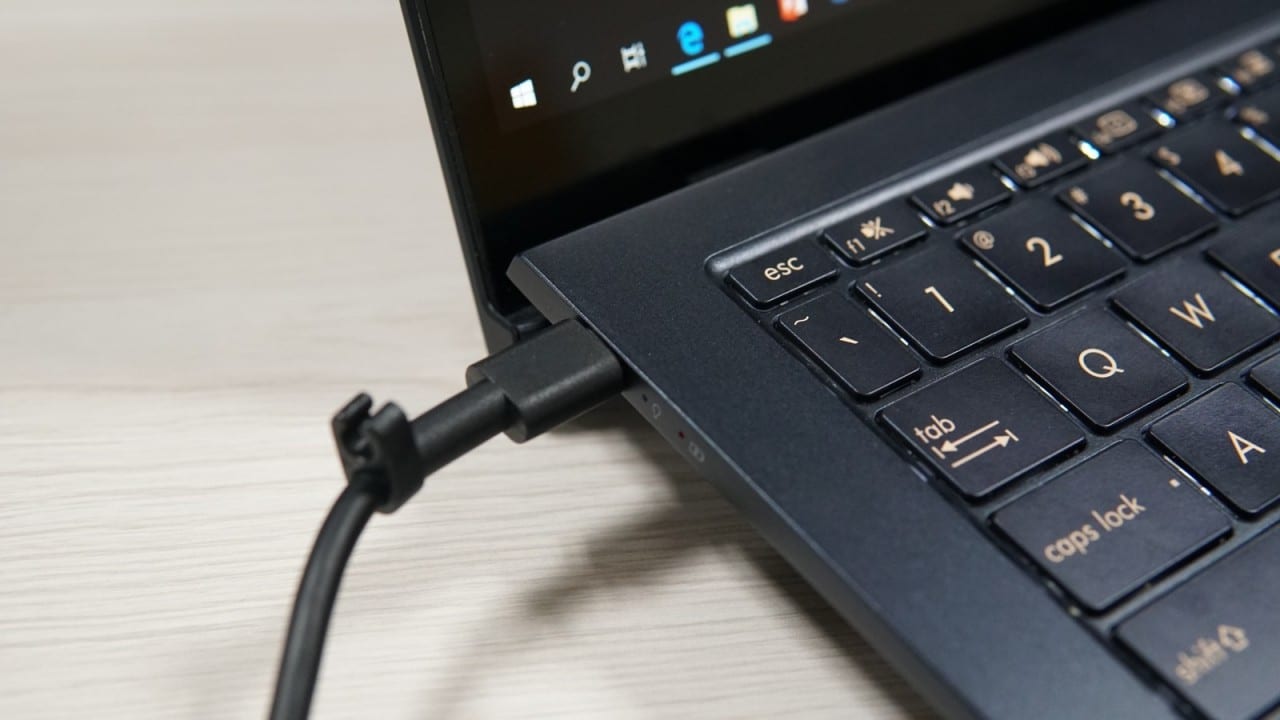
The Power adapter is now a direct USB Type-C port, no longer the barrel tube chargers which is definitely inspired by ASUS’ idol. But we thank ASUS for being upfront and just accepting this, we’ve been annoyed that for the past 3 generations of ZenBooks their barrel charger ports keeps on changing, making your cross-compatibility of chargers useless.
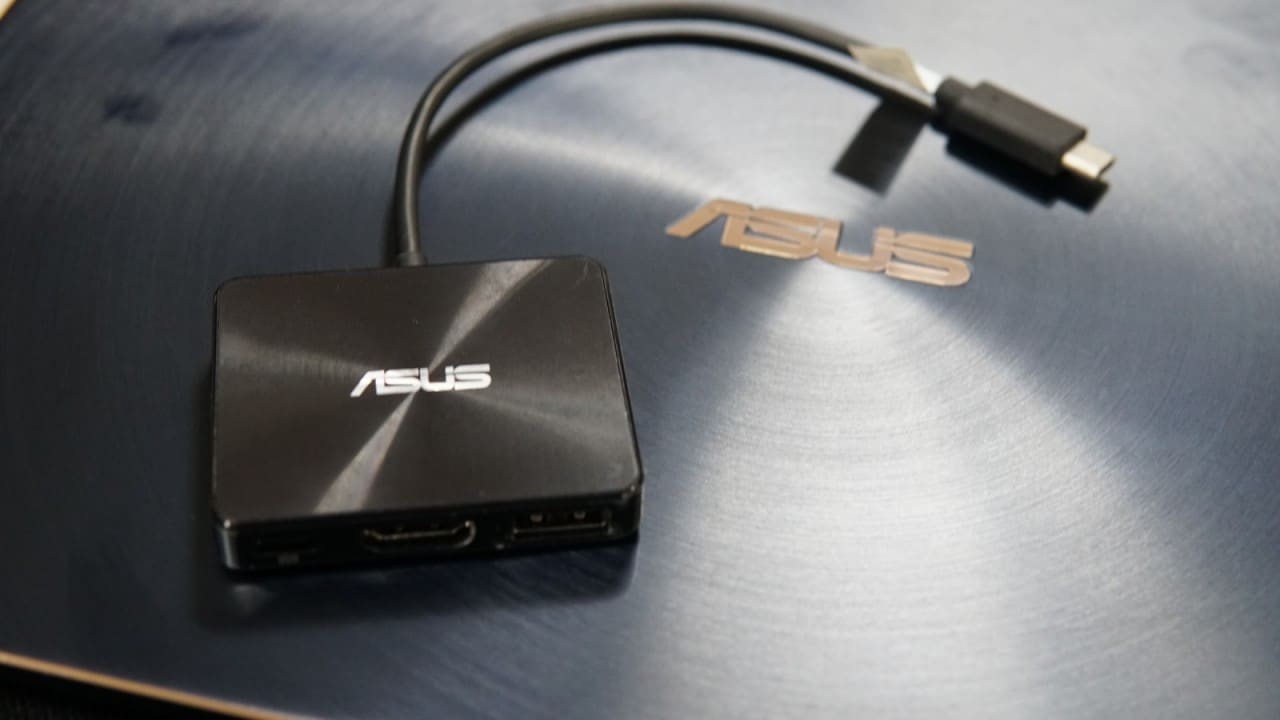
A Type-C adapter for 1 USB Type A port, HDMI and Type-C charging is included in the package. Nothing special as ASUS is already doing this since before, but we hope that in the future this can be more dynamic with a SD card reader.
The ZenBook S can last us a solid 5 1/2 hours of usage before finding a charge, now this is with ambient lighting in auto with browsing the web, emails, and casual video. In our office that the lights are harsh, I prefer the screen to be at maximum and which causes the battery to drain faster.

In our recon, we can stretch to around 7-8 hours with a light usage scenario, while heavy usage such as video with accompanied photoshop editing on-the-go got us around 3 1/2 hours of battery life.
Unfortunately. we didn’t get near the 13.5 hours advertised battery life of ASUS. Upon checking it was a benchmark test with 71% brightness of screen with power saving activated, but in our review, we didn’t sacrifice battery over performance.
On the plus side, the provided 65W charger is a quick buddy, we can reach 60% in less than an hour already and a full charge in around 1.2 hours in our test. We say this is already quick as its even while using the laptop as compared to previous generations with a much slower charging rate of 45W.
For two configurations of Php79,995 and Php99,995, the ZenBook S is ASUS’ ultimate portability machine ideally for executives that don’t need the luxury of graphics processing but utmost quality.

We say just stick with the 1080p variant if you’re really up to portability. At the new 2018 MacBook Air at already Php86,990, its a no brainer to get the ZenBook S if OS isn’t an issue with you. Our problems with the 4K resolution screen throttling the CPU performance hinders us in recommending the more expensive variant.
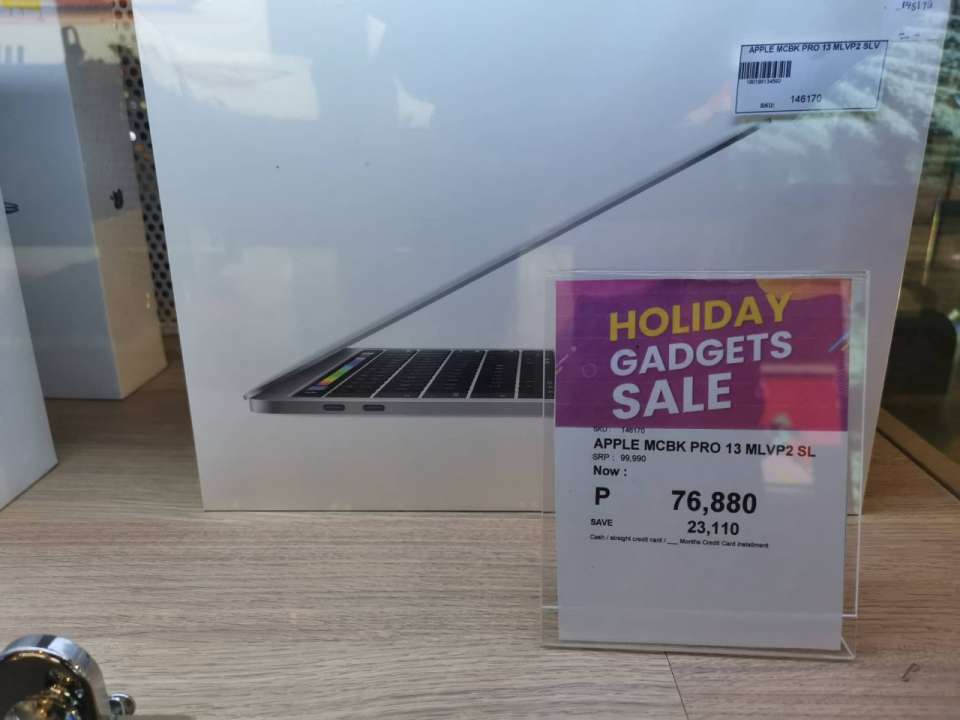
On the other side, even the 2017 MacBook Pro 13″ is now lower at a competitive price of 76,880 (Abensons) with 256GB of storage. But this is a 2017 model with an older CPU, problematic keyboard according to long term testimonials and even heavier. With deals like this, the competition is indeed hard, but just remember that ZenBook S is built for productivity and portability, not for “pro” users with intention of graphics editing as their main purpose.
While it might look for girls, we suggest you get the burgundy red variant instead of the blue one to stand out. At this price point of a laptop, color option is a luxury and we’re glad ASUS still offers an option for you to be different. Plus, this is exclusive to the Php74,995 variant, so its a nice touch.

Or if you’re just in the browse for a new laptop then you might want to wait for ASUS to locally launch the Zenbook S13 that is just launched last CES 2019. This has a ridiculous 97% screen-to-body ratio, retaining the webcam and even a new silver color. And yes, ASUS technically just killed the ZenBook S in less than just 12 months.
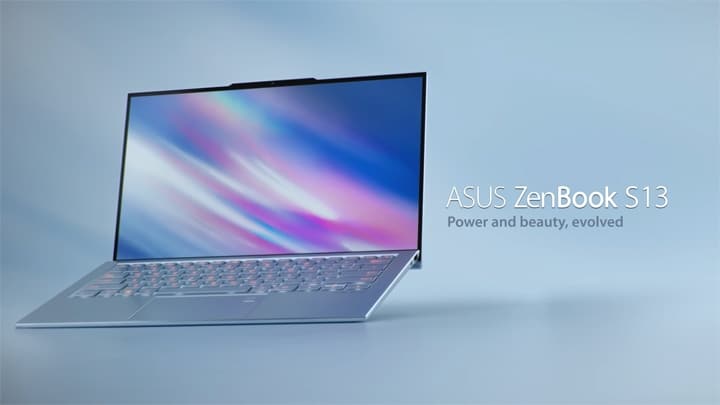
What we love about the ZenBook S
What needs to be improved
